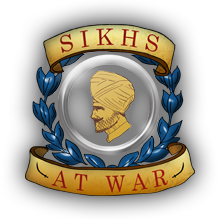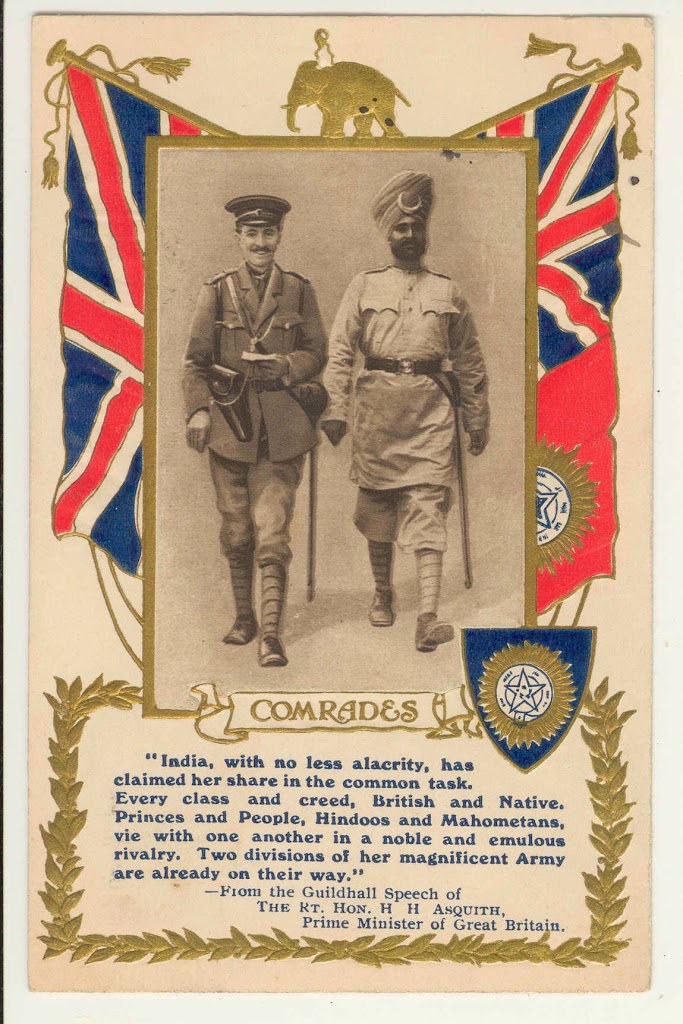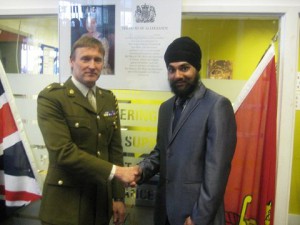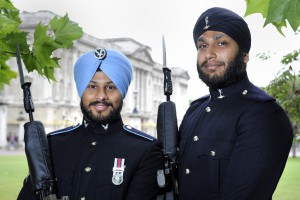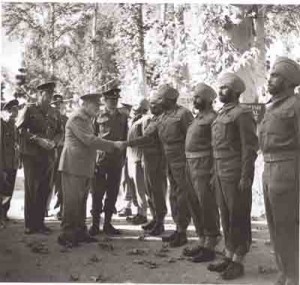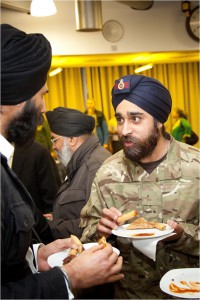The recent news coverage of Jatenderpal Singh Bhullar joining the Scots Guards and going on parade has been largely positive. I’ve reflected on this in previous posts.
Above: Jatenderpal shaking hands with Major Rick Fletcher (Slough ACIO) after taking the oath of allegiance.
He is parading alongside Guardsmen in their traditional bearskins. Below I will narrate why the significance of both lend the turban and bearskin to being complimentary to each other.
With media asking me for interviews and background to Sikhs in the British Army, I wanted to take this blog post to add some colour to why Jatenderpal wearing his turban is not only important but a celebration of +150 years of British and Sikh interaction in the military.
First, Jatenderpal is NOT the first Sikh to go on guard duty outside the Palace with a turban. That honour goes to Signaler Simranjit Singh (Royal Signals) and Lance Corporal Sarvjit Singh (Army Air Corps) who both undertook the duty in 2009 (below). Both have gone on to undertake operation tours in Afghanistan.
Nor is he the first to join the Household Division – Trooper Ranny Singh, was the first to join the Life Guards of the Household Cavalry.
BUT Jatenderpal is the first to pass selection and join a Foot Guards unit and go on duty with his turban and beard (symbols of his faith) intact.
No doubt other Sikhs without turbans and beards have joined the Household units, but as uncut hair is crucial for Sikh identity Jatenderpal is making history in maintaining this in the uniform of a Guardsman. More on this below.
Secondly, he is making history as a Guardsman but is also continuing a strong lineage of Sikhs who fought for Great Britain. Historically, Sikh interaction with the British military goes back a long long time:
In 1845 the Sikhs fought Britain during the Sutlej campaign (First Anglo-Sikh War)
In 1847 the Sikhs fought Britain during the Punjab campaign (Second Anglo-Sikh War). That year, the kingdom of the Sikhs was annexed by the British.
In 1857, Sikhs stood loyal to Britain during the mutiny. If they had not done so India could have fallen out of British hands
During the World Wars Sikhs fought valiantly for Britain in all areas of conflict (more here).
All this is the background to what I call the “special respect” the British had for Sikhs.
Unfortunately, this strong connection and history is lost, sadly over around 50 Sikhs serve in the British Army today.
Above: Sikhs historically served Britain, here some of them are meeting Winston Churchill in Yalta during WW2
Moving on to the turban vs bearskin issue (the title of this post), both are strong rich traditions which should be wholly supported as the highest symbol of respect, discipline and honour.
The bearskin is a tall fur cap worn by Foot Guards, it is an honour they won following their brave heroics at the Battle of Waterloo where they ousted Napoleon’s forces.
Today it is worn for ceremonial purposes but is a constant reminder of the valour of those who brought honour upon their regiments.
It is also a symbol of the rich traditions and heritage of the British and the respective Guards units that wear them, providing a poignant backdrop of historic endeavours in an age where we often forget about the service and sacrifices of those who helped make Britain great.
.
The turban defines a Sikh, above: Trooper Ranny Singh meeting other Sikhs at a Turbanology event
The turban, quiet simply, defines a Sikh. It is the physical form given to disciples since the creation of the faith by Guru Nanak Dev ji in 1469. The Sikh Gurus all wore turbans and it denoted their high spirituality.
In wearing a turban a Sikh shows he is independent, distinguishable and a follower of the way of life prescribed by the Sikh Gurus. This applies equally to women as well as men.
But the key to understanding the turban of the Sikhs is actually the uncut hair is houses – one of the 5 Ks. In keeping unshorn hair and beards, Sikhs accept the will of God and the humility of maintaining uncut hair gives them discipline and purpose.
The turban is the best way to cover, protect and encase the long hair – and becomes a crown which all Sikhs wear to show they are an independent race.
For an initiated Sikh, wearing a cap or hat is out of the question as it degrades the turban. Similarly the turban should be tied afresh daily and respected by all by not touching it or mocking it.
So the bearskin represents tradition, duty, honour, history and remembrance.
So the turban stands for identity, spirituality, independence, discipline and selflessness.
Is there any difference between them? Or do they actually compliment one another because of what they symbolise especially in a modern age.
I hope this short piece will shed some light on why Guardsman Bhullar is wearing his turban and not a bearskin – the key is to respect that he is able to serve in his regiment with his Sikh identity intact.
I truly hope his example inspires many more Brits to work hard and towards the goal of serving their faith and country.
There is more on the significance of Sikh identity in my new book here.
